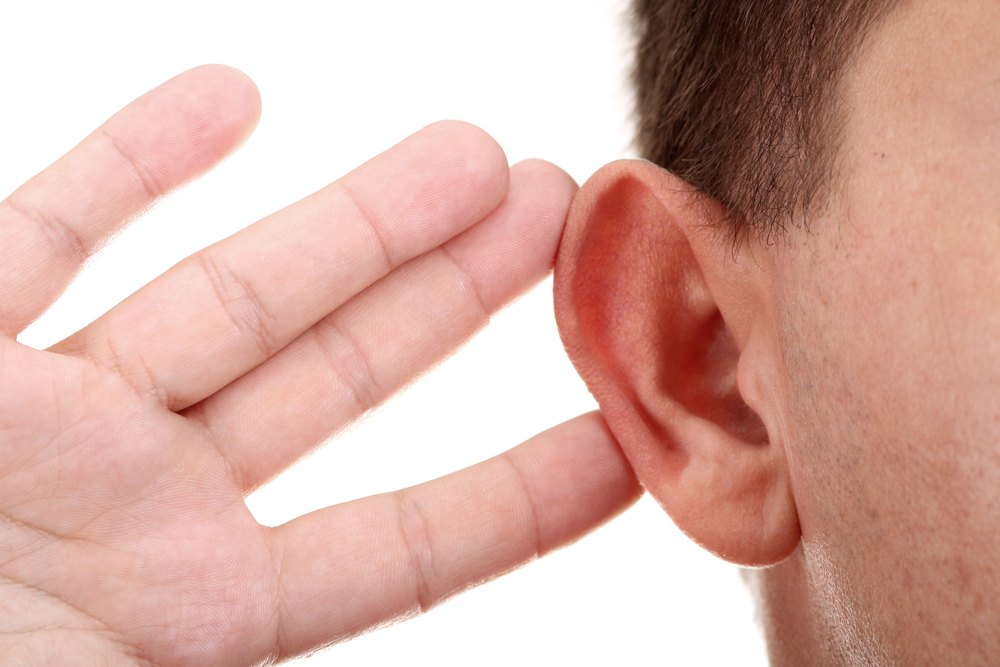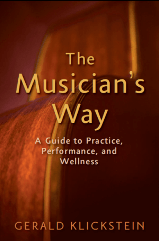
-Pete Townshend
The Musician’s Way, p. 277
True story: A percussion professor was concerned about the sound levels at his music school, so he purchased a sound meter and sampled the levels in various rooms.
He took readings during ensemble rehearsals, private lessons, and practice sessions.
In one of the teaching studios, he asked a horn professor to play an excerpt, and the reading rocketed to 100 decibels.
The percussionist knew that, at 100 dB, a person’s maximum safe exposure would total 15 minutes, if the sound was continuous, and the horn teacher often taught and rehearsed in that room all day.
Alarmed, the percussionist asked, “Do you ever have trouble with your hearing?” To which the hornist replied, “What?”
Hearing Loss among Musicians
Sound-induced hearing loss is a significant public health issue. Among musicians, it has reached epidemic proportions: 30-50% of professionals live with some degree of hearing impairment caused by overexposure to loud music.
Contrary to what we might assume, classical musicians may have higher rates of hearing loss than rockers, primarily because classical performers schedule more hours of music making each day and are often tightly clustered during rehearsals and performances.
Added to those grim figures, researchers have found that music students are routinely exposed to harmful levels of sound. Students’ hearing is actually being endangered by school-sponsored activities. Both college and pre-college students are at risk. Visit the Hearing Conservation section at MusiciansWay.com for research data.
The tragedy here is that sound-induced hearing loss is both permanent and 100% preventable. Schools and employers have got to change their ways, and we musicians must step forward to safeguard our well-being.
To help us institute change, my book The Musician’s Way as well as MusiciansWay.com speak out about the perils of loud music and chart numerous strategies that we can employ to conserve our hearing.
First, some background.
How Sound Can Injure Our Ears
Our hearing can be harmed if we’re exposed to a brief intense sound – say, an explosion – or to persistent loud sounds such as we encounter at ensemble rehearsals, band and orchestra concerts, and in small practice rooms (not to mention dance clubs and sound production studios).
The louder the sound, the shorter the safe exposure time.
Hearing loss results when an overdose of sound irreversibly injures the hair-like cells in the inner ear. Then, like grass that’s been trampled, those cells can’t convert sound waves into signals for the brain to decode. Two common effects are reduced sensitivity and unrelenting tinnitus, a.k.a. ringing in the ears.
To think of it another way, sound somewhat resembles radiation. We’re all exposed to solar radiation, but the intensity levels aren’t anything to worry about unless we plan to be outside for a while, in which case we don sunscreen and appropriate clothing. Similarly, in radiation-intensive work environments such as x-ray clinics, staff implement precautions that shield them from harm.
With sound, everyday conversation doesn’t produce dangerous levels, but the high-volume settings in which we musicians work compel us to take protective steps, much like workers in noisy factories, or else we risk hearing damage.
Speaking of factories, in the U.S., the government regulations that specify safe sound limits in workplaces don’t apply to the entertainment industries. So it’s up to us musicians to look after ourselves. Across the Atlantic, though, noise-at-work regulations became applicable to the entertainment industries in 2008.
Hearing Conservation for Musicians

Hearing Conservation Guidelines
1. Appreciate healthy hearing
2. Schedule regular hearing exams
3. Recognize dangers
4. Heed warning signs
5. Protect your hearing
Here, I’ll touch on how we can recognize dangers and take protective measures. See The Musician’s Way pages 277-291 for more complete information.
The National Institute for Occupational Safety and Health (NIOSH) has established guidelines that quantify our safe exposure time at particular sound levels. (Update 2017: see their excellent new sound level meter app for iOS devices – it’s free).
We can gauge whether our hearing might be at risk by using a sound meter to measure the levels where we practice and perform and then comparing the levels and our duration of exposure to the NIOSH standards. Representative meters and an excellent app are indexed at MusiciansWay.com. A conclusive determination of risk, however, requires expert assessment.
Lacking a meter, NIOSH reports two ways that we can tell whether sound levels might be unsafe:
“First, if you have to raise your voice to talk to someone who is an arm’s length away, then the noise [or music] is likely to be hazardous. Second, if your ears are ringing or sounds seem dull after leaving a noisy place, then you probably were exposed to hazardous noise.”
3 Strategies to Protect Our Hearing
When sound levels become excessive, there are three fundamental ways that we can protect ourselves. We can:
1) Modify acoustic environments
2) Reduce and manage exposure
3) Wear earplugs
- Environmental modifications encompass things such as installing sound-absorbing panels or curtains and using sound shields – The Musician’s Way documents eight different sorts of modifications.
- To reduce exposure, we can practice and perform at lower volumes, turn down personal stereos and studio monitors, intersperse louder and softer pieces during rehearsals, and more.
- Earplugs are an essential accessory when we involve ourselves in loud non-music making activities – e.g., operate power equipment or attend sporting events, and so forth. But earplugs aren’t the preferred choice for most of us when we play or sing because, with the exception of pricey in-ear monitors, they significantly alter how we hear ourselves. Nonetheless, if we perform with the likes of a percussion ensemble or athletic band – or if we play or sing thunderous repertoire – earplugs may be our only option for preventing hearing loss. Fortunately, as described in The Musician’s Way, we can now choose from several types of earplugs designed for musicians. And many performers regularly use such plugs with excellent results. Even low-cost foam earplugs can be beneficial. What’s more, in earsplitting settings, earplugs can enhance our ability to hear akin to the way that sunglasses aid vision in glaring sunlight.
Whatever protective strategies we choose, we need to take action because, as was the case with Pete Townshend, ignoring hearing health can have tragic, life-altering effects.
See Chap. 13 of The Musician’s Way for detailed hearing health guidelines. More Hearing Conservation resources are posted at MusiciansWay.com.
Related posts can be found in the Injury Prevention category.
© 2009 Gerald Klickstein

Thanks, Marcus. Appreciate you stopping by.
Great stuff Gerald, really like your ideas on protective strategies – smart stuff!